12 bad laundry habits that are ruining your clothing, linens and washing machine – and what to do instead
Avoid shrinking, fading and damage

- 1. Overloading
- 2. Skipping sorting
- 3. Overusing detergent
- 4. Using hot water for all loads
- 5. Failing to shake
- 6. Not cleaning your washing machine
- 7. Regularly using bleach on whites
- 8. Using fabric softener on everything
- 9. Not airing the machine
- 10. Forgeting lint trap
- 11. Using one cycle for all
- 12. Leaving wet clothes

Doing laundry is as necessary a household task as any. And with the evolving technology on appliances and detergents, as well as many of us reverting to more natural cleaning supplies, many trends have come and gone along the way.
However, some laundry habits, which you may consider harmless, could actually be having an adverse effect on your routine, clothes, or appliances, our cleaning and laundry pros warn.
It can be easy to think once you learn how to do laundry, that's it. Here, our cleaning experts dish the dirt on the bad habits to avoid, and what to do instead.
Outdated laundry habits
1. Overloading the machine

Overloading is one of the most common washing machine mistakes, and it could be taking a serious toll on your machine, warns Forrest Webber, founder of Bear Brothers Cleaning. Deloading the machine can stop a washer from shaking.
He says, 'Look, I get it – life is busy. Who has time to run two loads when you can just stuff all your clothes into the machine? But, your clothes need space to get clean, and overloading puts unnecessary strain on your machine, leaving your clothes in a swirling mess of not-so-fresh results.'
Instead, give your clothes space, and always stick to the recommended load size, to ensure a thorough clean. We recommend using an effective detergent, such as the bestselling ARM & HAMMER Plus OxiClean Odor Blasters Liquid Laundry Detergent available at Walmart, which deeply cleans clothes and delivers a long-lasting freshness, to keep laundry smelling nice for longer.
2. Skipping sorting
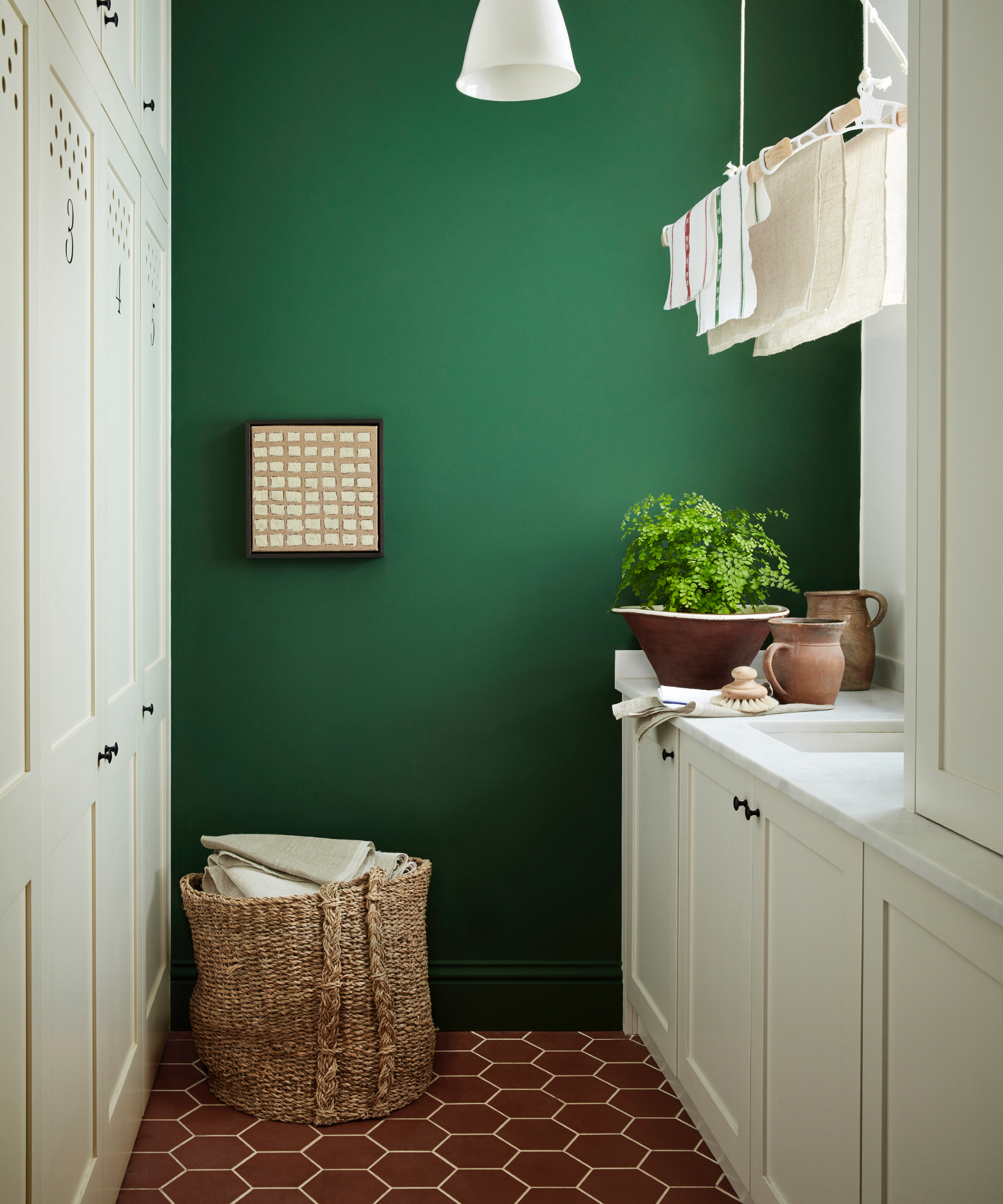
Do you need to separate your laundry? According to Karina Toner, operations manager at Spekless, neglecting to do so is an outdated laundry habit which could be affecting your items.
She says, 'Washing different fabrics together can lead to uneven wear, pilling, and color transfer.'
If you're not sure how to sort clothes for laundry, sort by color, fabric type, and washing requirements for better preservation and cleaning results to make laundry easier.
You can unlock the secret to quick laundry with this Joseph Joseph laundry organizer, so investing in a separated laundry hamper is a worthwhile way to make laundry day a breeze. Head of Solved Punteha van Terheyden has the larger 90 liter version, available on Amazon, with three compartments and says it is an 'absolute game-changer', making laundry chores quicker and easier.
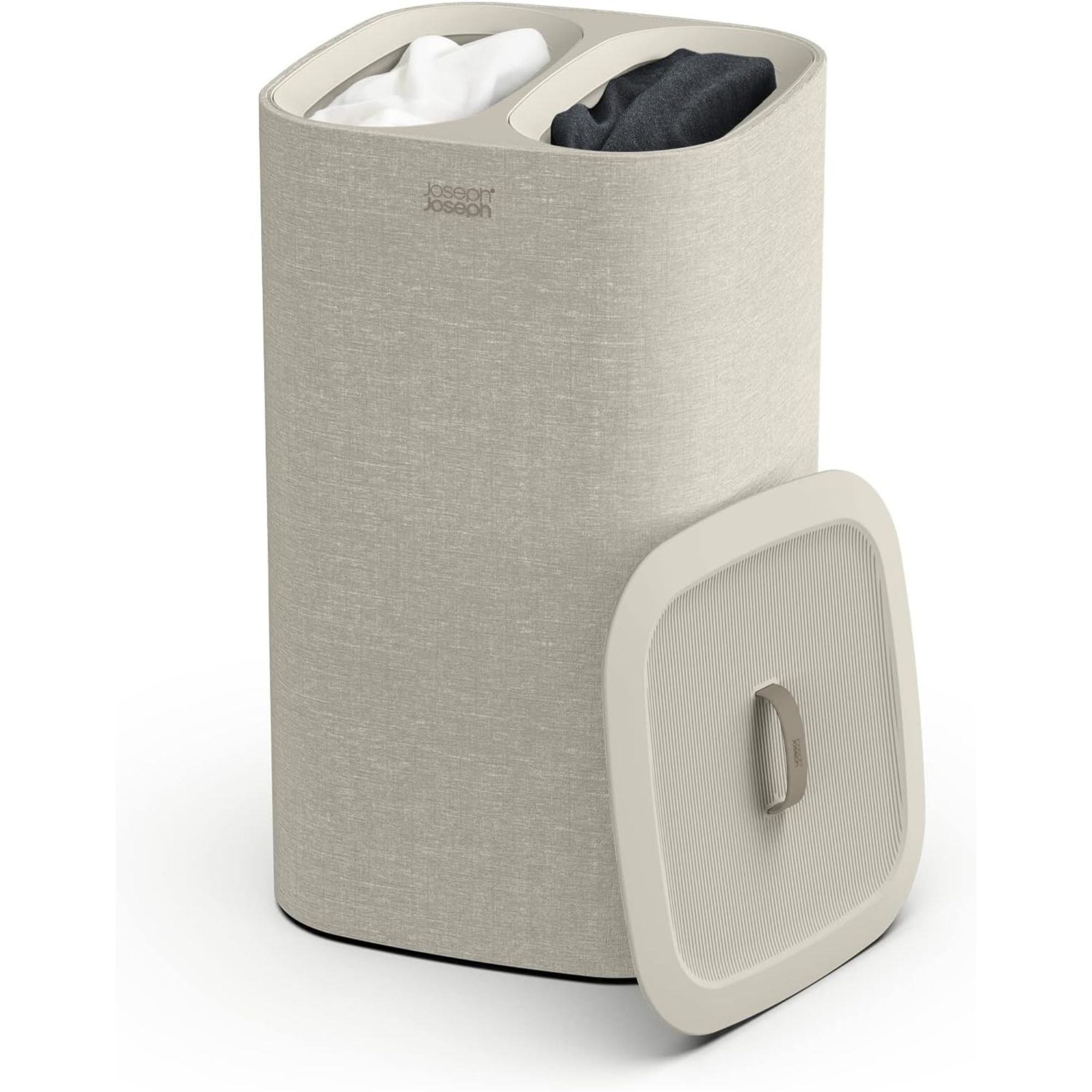
The reason this laundry hamper is so ingenious is that it features two removable laundry bags with handles, so you can quickly grab your dirty laundry to throw on a dark or white was with ease. It's also sleek and stylish, with a tasteful design to compliment your laundry room ideas, and available in different colors to suit most home decor schemes.
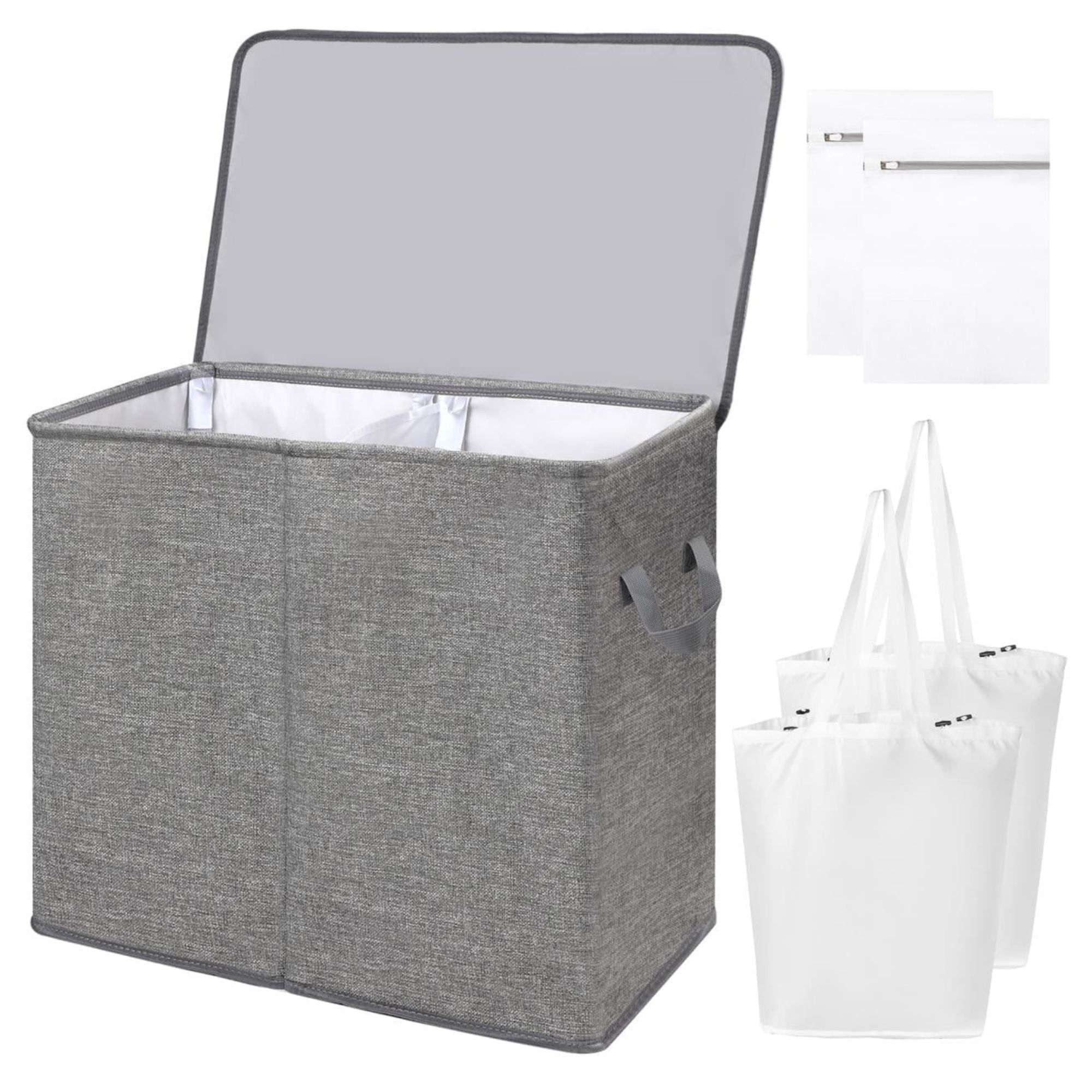
This laundry hamper is structurally sturdy, with a durable support rod to prevent collapse. It features a water-proof coating, and two removable laundry bags, both with handles. It also comes with two mesh laundry bags, for washing delicates or using to store dirty laundry when travelling.

This large laundry basket is perfect for larger families, with three detachable bags, in an easy-to-assemble, foldable design. It has a weight load of up to 40 pounds, making it durable and long-lasting, and separate sections for darks, lights, and hand-wash items.
3. Overusing detergent
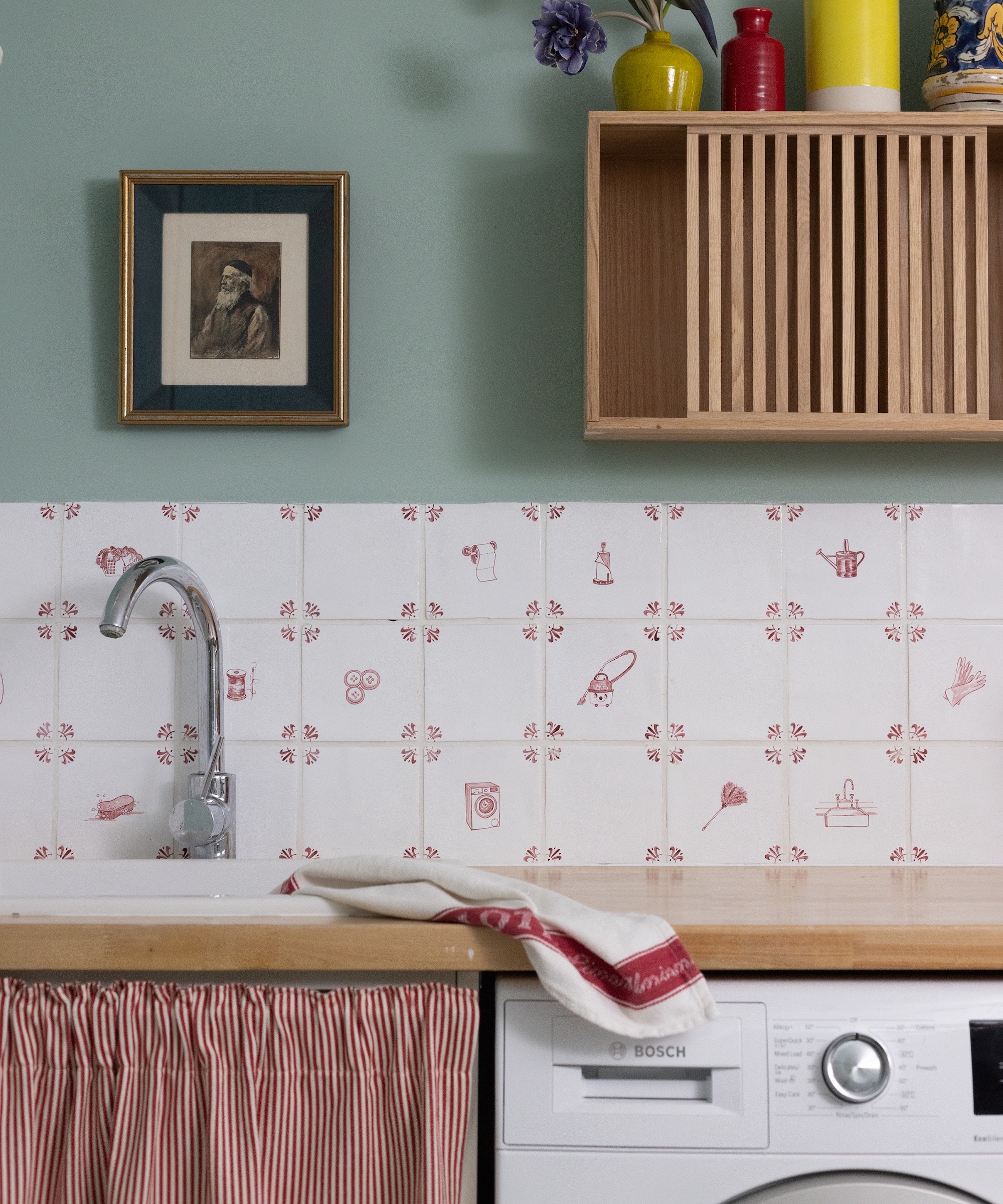
You might think that using more detergent will give your laundry a better, deeper clean, but, actually the opposite is true, and is likely one of the mistakes you are making with laundry detergent or mistakes you're making with laundry pods.
Cleaning expert Webber explains, 'If a little detergent works, then a lot must work even better, right? Wrong. Using too much detergent is like dumping a whole bottle of shampoo on your head – sure, it smells great, but good luck getting it all out.
'Excess detergent leaves residue on your clothes and your machine, making your clothes feel stiff and itchy,' and actually attracting dirt.
So, always use the right amount of detergent, or even a little-less if you've got one of the high-efficiency, best washing machine, and use a detergent measuring cup, such as The Laundress Laundry Measuring Cup available at Amazon to keep track of how much you're adding to your load for accurate dosing. 'Think about it: fewer bubbles, fewer problems,' adds Webber.
4. Using hot water for all loads
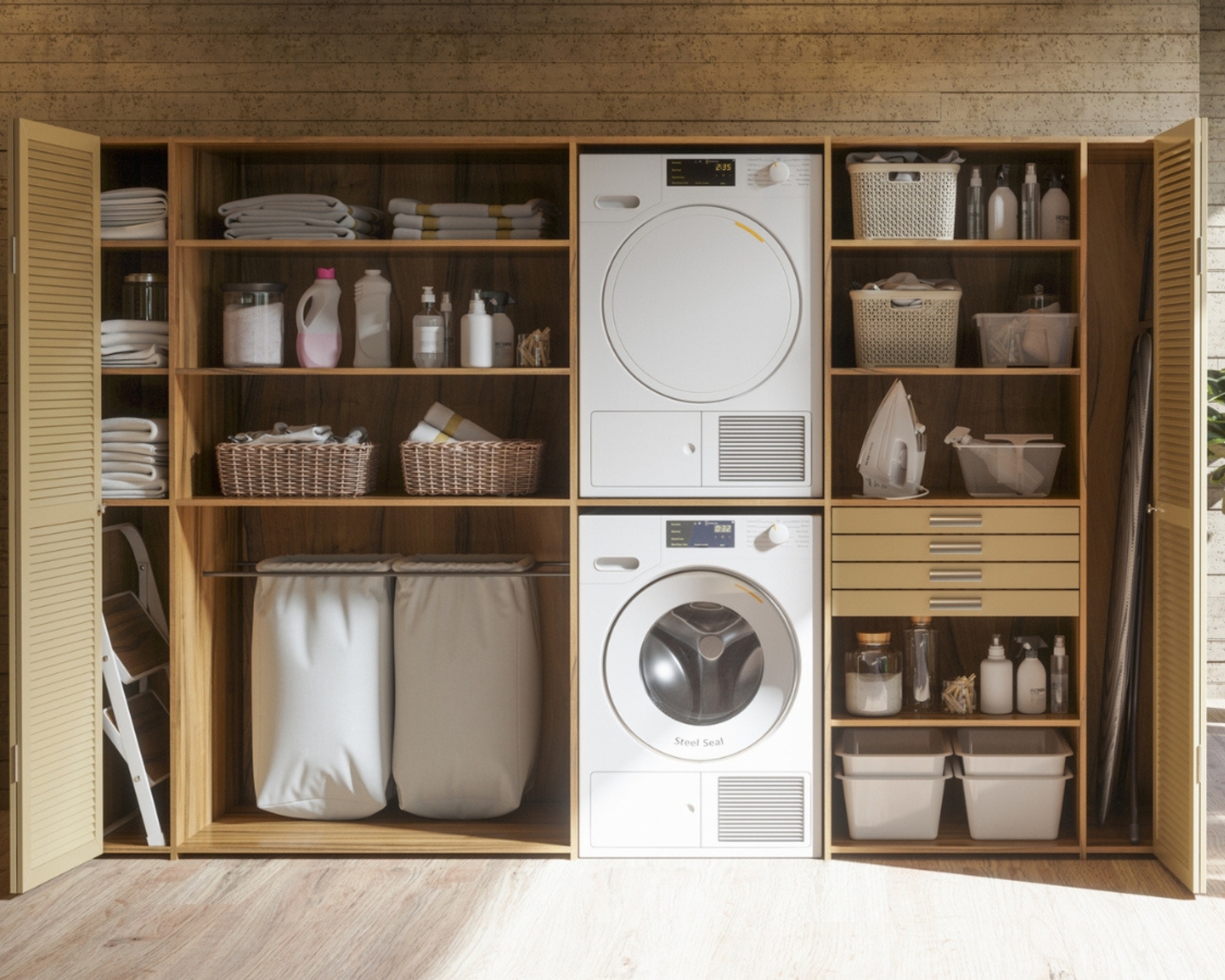
There are items you should always wash in hot water, and items you should never wash in hot water – but are you using hot water for every load?
Cleaning expert Toner says, 'Washing in hot water when unnecessary can fade colors, shrink fabrics, and waste energy. Use cold water for most washes, reserving hot water for whites or heavily soiled items.'
While this prevents shrinking, it's also both an effective way to save energy when doing laundry, and to save money on laundry, ideal if you're looking for ways to be sustainable at home. We recommend using the Tide Coldwater Clean Fresh HE Turbo Clean Liquid Laundry Detergent available at Walmart when washing on cold cycles, which offers a brilliant clean and targets tough stains.
5. Not shaking out clothes before drying

While rushing to get drying done, it can be all too tempting to grab everything from the washer and tossing it in the dryer in one giant, wet clump. But, even the best clothes dryer will struggle to get this dry, so this is a tumble dryer mistake best avoided.
Elizabeth Shields, operations manager of SuperCleaning Service Louisville, the number one professional house cleaning service in Louisville, explains, 'It's easy, but it also means you're setting yourself up for more hassle later. Clumped-up clothes take longer to dry and can end up wrinkled.
'So, take just a few extra seconds to shake each item out before you pop it in the dryer. This will help the warm air flow better around your clothes, so they dry more evenly and don't come out looking like you slept in them.'
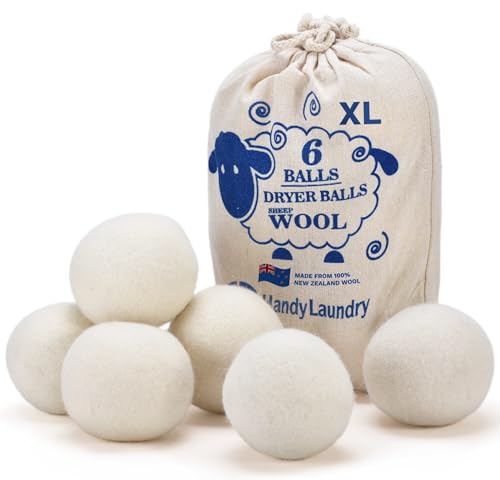
These wool dryer balls reduce wrinkles and static when drying clothes in a tumble-dryer, and are made of 100% premium New Zealand wool. They also speed up drying time, and keep laundry separated to allow hot air to circulate more efficiently.
6. Not cleaning your washing machine
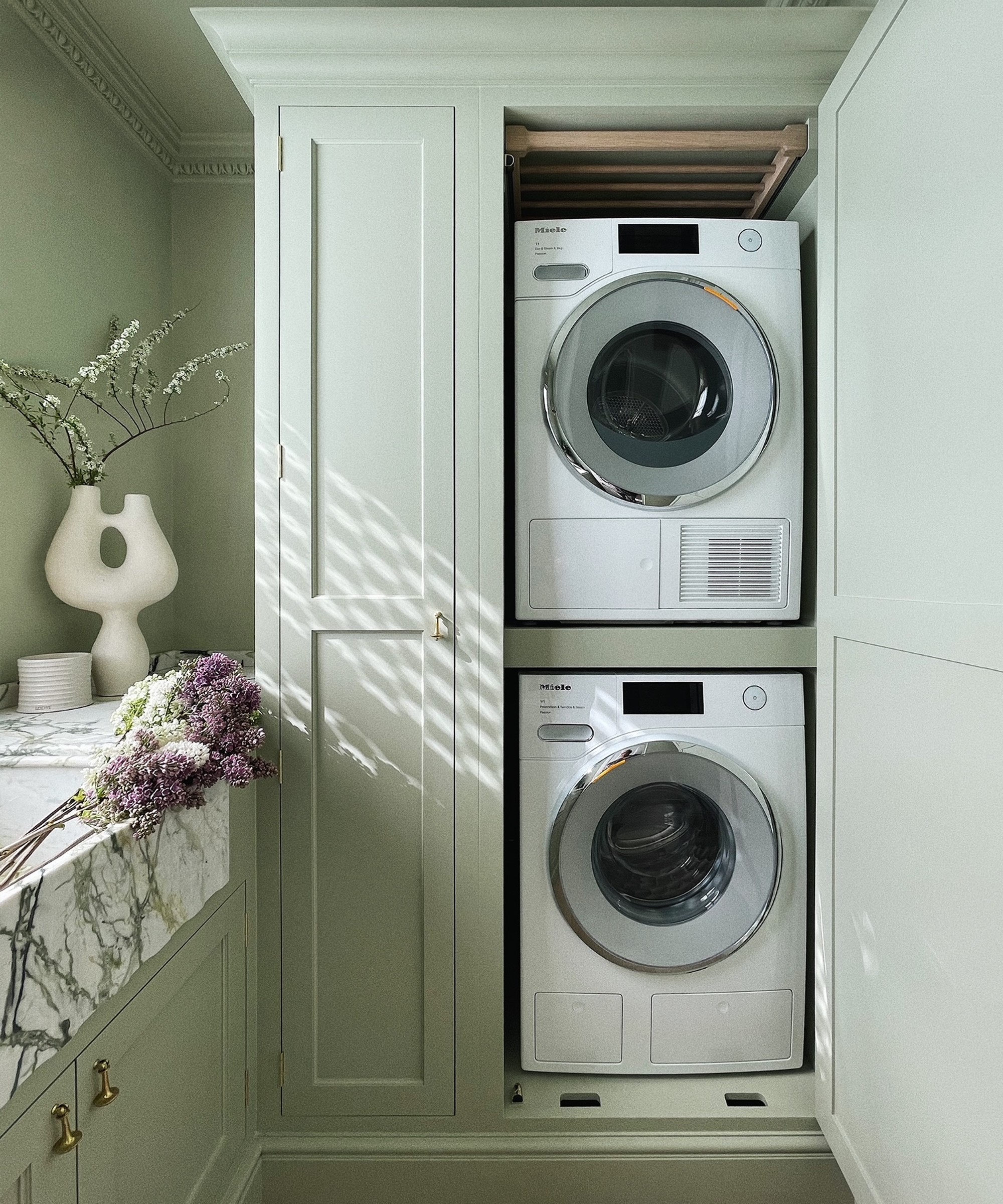
Do you know how to clean a washing machine? It may seem redundant, but is actually incredibly important for both your machine and laundry.
Cleaning expert Webber says, 'Because the washing machine constantly cleans things, people assume it merely keeps itself clean. However when the dirt and detergent residue builds up over time, your clothes start to smell a little. It is similar to what would happen if you never cleaned your shower.'
If you're unsure how often you should clean your washing machine, to take care of it, Webber recommends doing so once a month. While you can use commercial cleaners to clean a washing machine that smells, you can clean with vinegar for a natural alternative, that works as both a sanitizer and deodorizer. We recommend using the bestselling Great Value Distilled White Vinegar available at Walmart, which has hundreds of versatile uses around the home.
7. Regularly using bleach on whites

Regularly washing whites with bleach might be an inherited laundry habit, but cleaning expert Toner warns against this.
She says, 'Frequent bleach use weakens fabrics over time, causing them to wear out faster.'
If you do want to use bleach in laundry to get dingy whites white again, ensure you follow the instructions carefully, and consider using chlorine-free bleach, such as the Grab Green Bleach Alternative Pods available at Amazon for a gentler alternative.
If you prefer not to use chemicals altogether, Toner recommends using baking soda in laundry, such as the Arm & Hammer Baking Soda available at Amazon, for bright whites.
8. Using fabric softener on everything
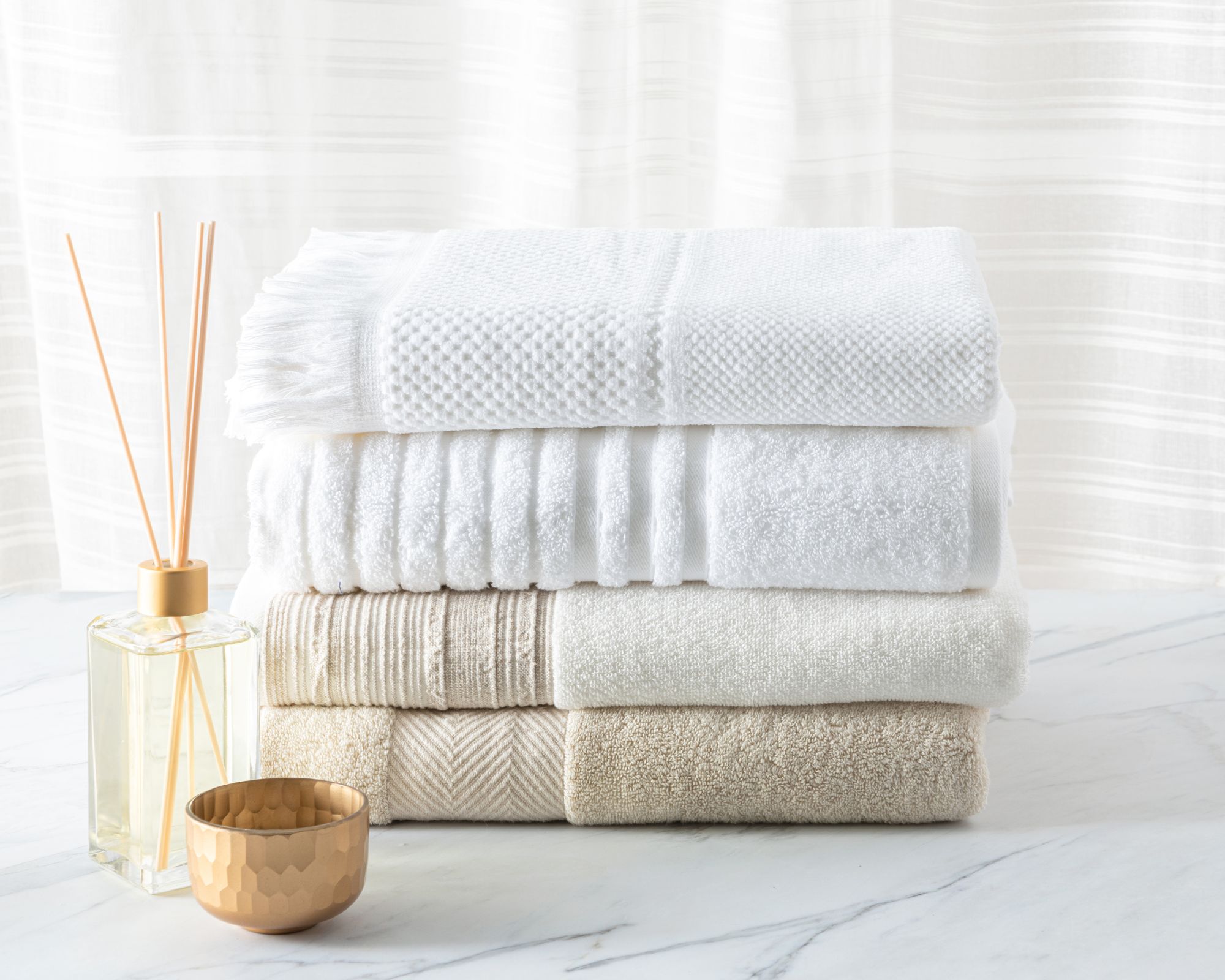
You may know how to use fabric softener in laundry, but should you use fabric softener on towels?
Cleaning expert Webber advises, 'Fabric softener makes your clothing wonderful and fluffy, but, when washing towels, the fibers are coated with fabric softener, which reduces their absorbency.'
Instead, soften fabrics naturally with white vinegar to keep towels soft, which is an affordable alternative to keeping your towels cozy. 'Additonally, it doesn't leave behind that waxy accumulation that gives the impression that your clothing is receiving a spa day when, in reality, it is just suffocating under a layer of chemicals.'
To wash towels with vinegar, simply swap it for your detergent – just make sure you know where to put vinegar in a washing machine.
9. Not airing out the machine
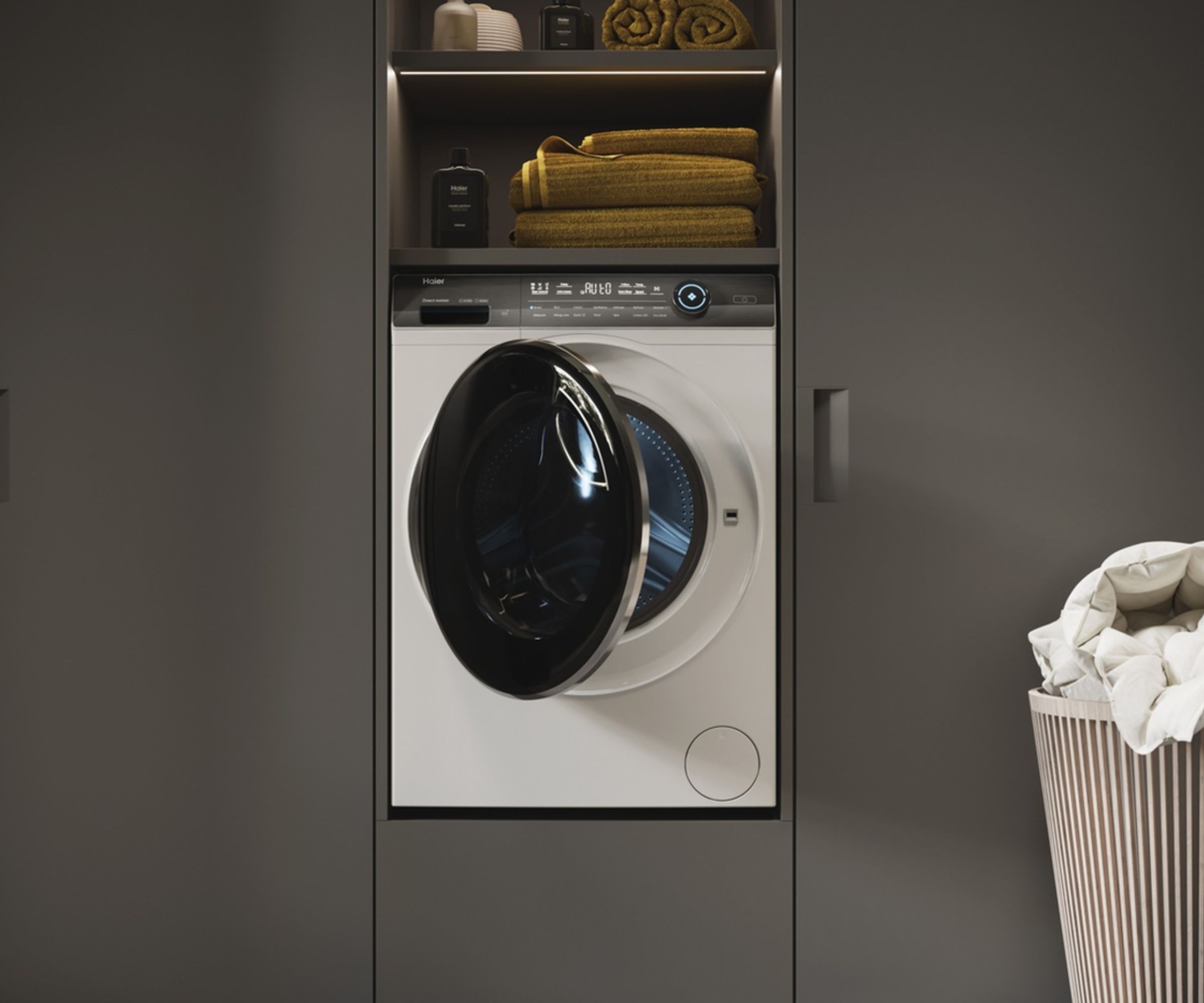
When it comes to leaving your washing machine door open between uses, cleaning expert Toner explains, 'Closing the door immediately after use traps moisture, encouraging mildew growth in the drum.'
To prevent needing to remove mold from the rubber seal on your washing machine, leave the door and detergent drawer open for a few hours after each use to let moisture evaporate, recommends Toner, which is one of the things people with nice smelling laundry rooms always do.
10. Forgetting to clean the lint trap

One of the things people with nice smelling laundry rooms never do is neglect to clean the lint trap on their best clothes dryer.
Cleaning expert Webber says, 'If you have a washer-dryer combo, let me introduct you to the lint trap – it's that thing you've probably been ignoring for years. Lint buildup can not only make your dryer run inefficiently; it's a fire hazard in extreme cases.'
So, to clean a dryer's lint trap, Webber recommends checking and cleaning it whenever you use your dryer, by removing any fluff. You should also aim to deep-clean it regularly with dish soap, such as the Dawn Ultra Dish Soap Dishwashing Liquid available at Walmart, and an old toothbrush. Always leave it thoroughly air-dry before replacing.
11. Using the same cycle for all clothing

Washing machine settings can be extremely confusing, but cleaning expert Shields warns against using the same setting for every wash.
She says, 'Hit normal and call it a day? The washer has all those other settings for a good reason! Different fabrics need different handling, and using the same cycle every time is like treating all your clothes as if they're made of the same stuff, which they're not! Try to match up the cycle to the type of clothes you're washing.'
For example, use a gentle cycle for delicate items like underwear or wool, and wash in a delicate laundry bag, such as the Mainstays 4 Compartment Delicate Mesh Wash Bag available at Walmart. On the other hand, switch to more heavy-duty settings for jeans, and higher temperatures for towels and bedding, to effectively banish bacteria.
Our dedicated guide to washing machine settings clearly breaks down everything you need to know, if you've been left pondering what the delicate setting on a washing machine is.
12. Leaving clothes in the washer
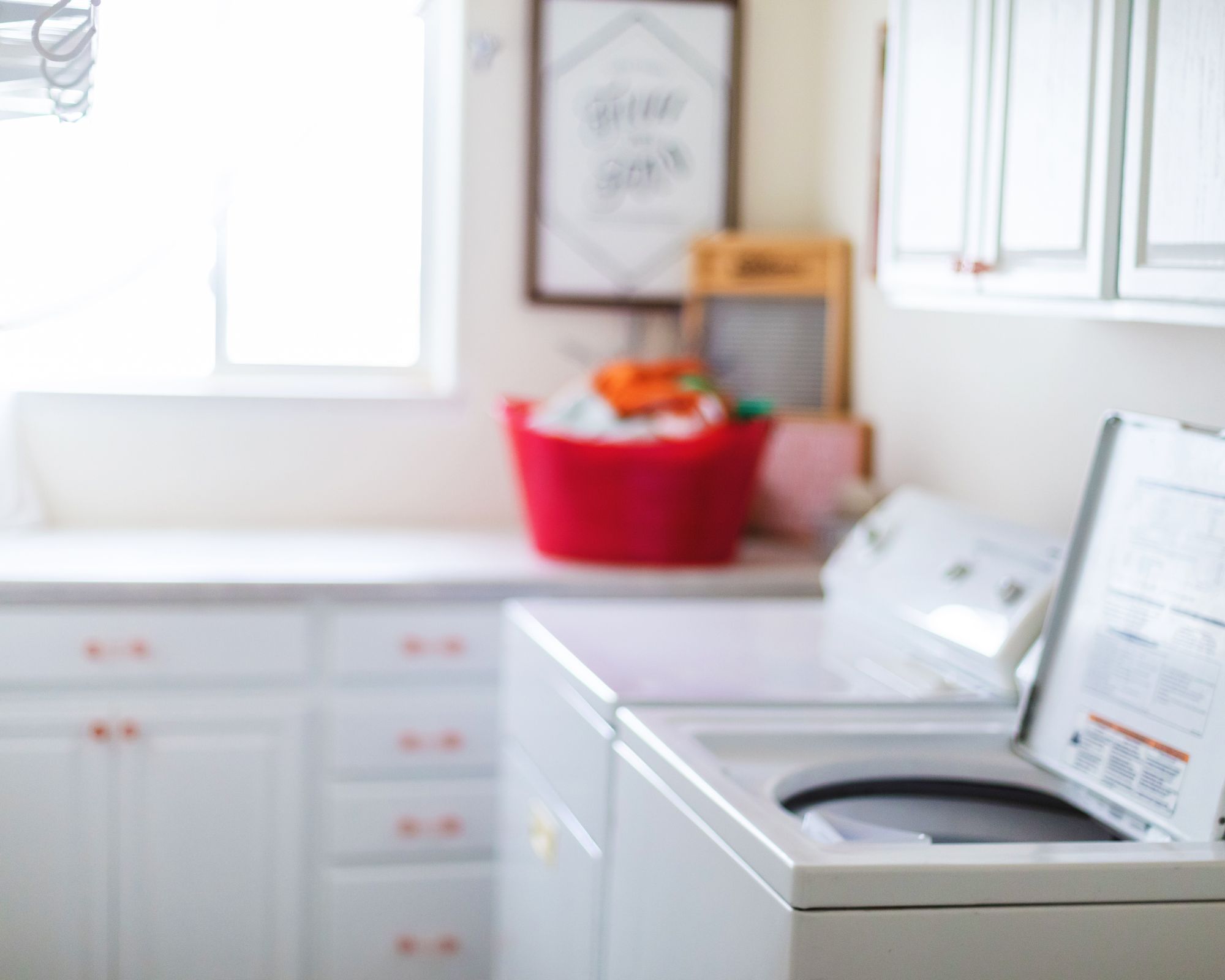
As tempting as it may be, if you're wondering if you can leave clothes in the washer overnight, the answer is no, not really – and with good reason.
Cleaning expert Webber says, 'We've all been there: you load up the washing machine, get sidetracked by anything else, and the next day comes, and your clothes are still in the washer. You're left with a musty, clammy burden,' and clothes which smell sour after washing.
So, how do you avoid this? Remove the clothes from your washing machine as soon as possible, by setting a timer to remind yourself or using an app if your washing machine has one – this is one of the outdated laundry habits that's easy to break.
If your clothes already smell musty, you can wash them with white vinegar, and harness the benefits of air-drying laundry to freshen them up. If you don't have a washing line, the Riveda Retractable Clothesline available at Amazon is simple, quick and easy to install, or simply take your clothes drying rack outside.
You can also have a more discreet rack that doesn't intrude on your space visually. I tried the Joseph Joseph Eclipse indoor drying rack and loved it. It has a screen to shield laundry from view without compromising air flow, and works brilliantly in tiny spaces too. It's available to buy on Amazon.
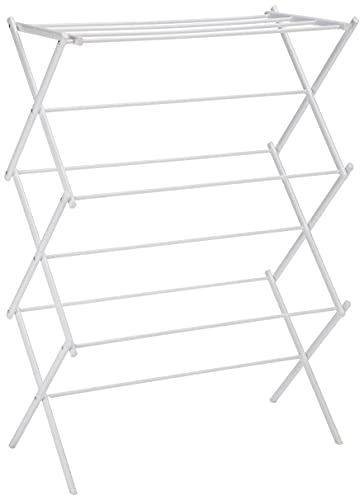
This is a durable, lightweight and foldable laundry rack, perfect for carrying outdoors and back inside when finished with. It can support up to 32 pounds, so easily holds a whole load of washing.
Now that you're clued up on which outdated laundry habits to break, these are the laundry room essentials everyone needs.
From wool dryer balls to washing machine cleaner, they will help you ace your laundry routine, and keep your laundry room looking, and smelling, its best.
Sign up to the Homes & Gardens newsletter
Design expertise in your inbox – from inspiring decorating ideas and beautiful celebrity homes to practical gardening advice and shopping round-ups.

Ottilie joined Homes & Gardens last year, after finishing a Master's in Magazine Journalism at City, University of London. With previous contributions in Livingetc and Motorsport Magazine, she produces content for the Solved section on the website, focusing on clever tips and tricks to keep your home beautiful, organized and clean. She also has a Master's degree in English Literature and History of Art from the University of Edinburgh, where she developed a love for inspiring interiors and architecture.
-
 Step up your pool cleaning routine with Beatbot AquaSense 2 Ultra
Step up your pool cleaning routine with Beatbot AquaSense 2 UltraCelebrate National Pool Opening Day by saving up to $618 on a luxurious pool cleaning solution from Beatbot.
By Sponsored
-
 Isabella Rossellini's kitchen defines 'pantry perfection' – her sleek storage method is one of the most beautiful ways to bring order to your shelves
Isabella Rossellini's kitchen defines 'pantry perfection' – her sleek storage method is one of the most beautiful ways to bring order to your shelvesA custom Chilean applewood pantry lines the walls of the Conclave actress's kitchen – you can tap into her stunning technique from $42
By Megan Slack
-
 How to dry a duvet without a dryer – to reduce energy costs, protect your appliance, and save money at home
How to dry a duvet without a dryer – to reduce energy costs, protect your appliance, and save money at homeYou don't need a tumble dryer for fresh and fluffy bedding, laundry experts assure
By Ottilie Blackhall
-
 My cheap dehumidifier makes easy work of air drying laundry indoors despite the humidity of spring showers – get yours on sale for just $49 now
My cheap dehumidifier makes easy work of air drying laundry indoors despite the humidity of spring showers – get yours on sale for just $49 nowIt's useful for lots of things around my home
By Punteha van Terheyden
-
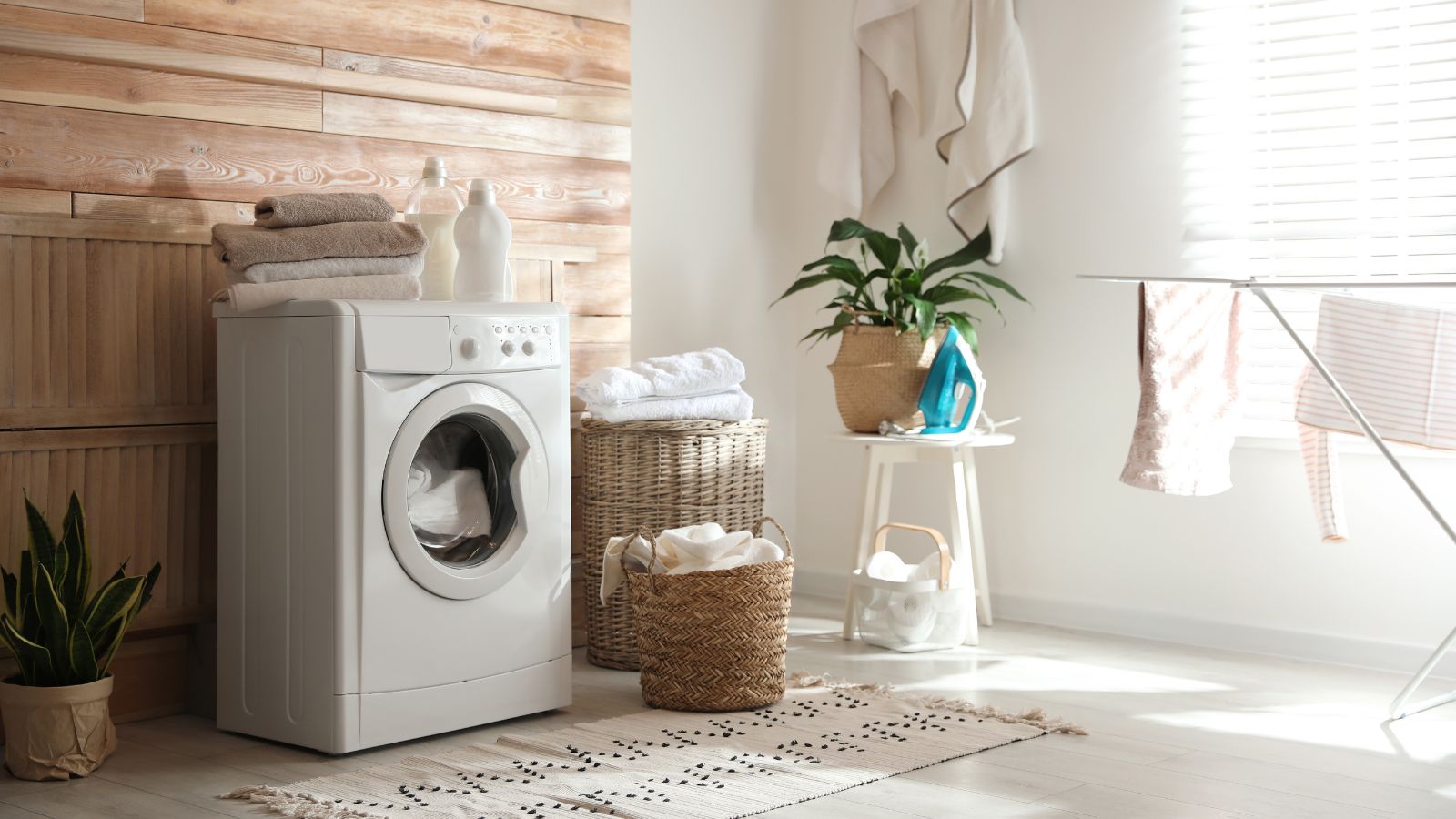 Looking for a natural laundry-softening alternative? I'm a professional cleaner and it's time to ditch synthetic ones for 5 non-toxic softeners that work
Looking for a natural laundry-softening alternative? I'm a professional cleaner and it's time to ditch synthetic ones for 5 non-toxic softeners that workRefresh your laundry routine with these fabric softener alternatives
By Karina Toner
-
 Unlock the magical mold-killing and stain-busting superpower of this humble household ingredient that costs just 50 cents
Unlock the magical mold-killing and stain-busting superpower of this humble household ingredient that costs just 50 centsIf you have aspirin in the house, you can use it to banish mold
By Ottilie Blackhall
-
 5 warning signs you're using the wrong amount of detergent – avoid greasy residue, stiff fabrics and skin issues with these simple cleaner-approved tips
5 warning signs you're using the wrong amount of detergent – avoid greasy residue, stiff fabrics and skin issues with these simple cleaner-approved tipsPlus, why it's important to get the amount just right
By Ottilie Blackhall
-
 6 ways to prevent mold and damp in bedrooms – expert solutions to maintain a safe sleep environment
6 ways to prevent mold and damp in bedrooms – expert solutions to maintain a safe sleep environmentDon't sleep on these six tips, experts urge
By Seraphina Di Mizzurati
-
 Laundry experts reveal 7 unexpected washing rules you can throw out the window – from separating fabrics to mixing whites and colors
Laundry experts reveal 7 unexpected washing rules you can throw out the window – from separating fabrics to mixing whites and colorsForget everything you thought you knew
By Ottilie Blackhall
-
 Using this button on your washing machine will cut your bills and help the planet
Using this button on your washing machine will cut your bills and help the planetA single switch can make a load of difference
By Chiana Dickson